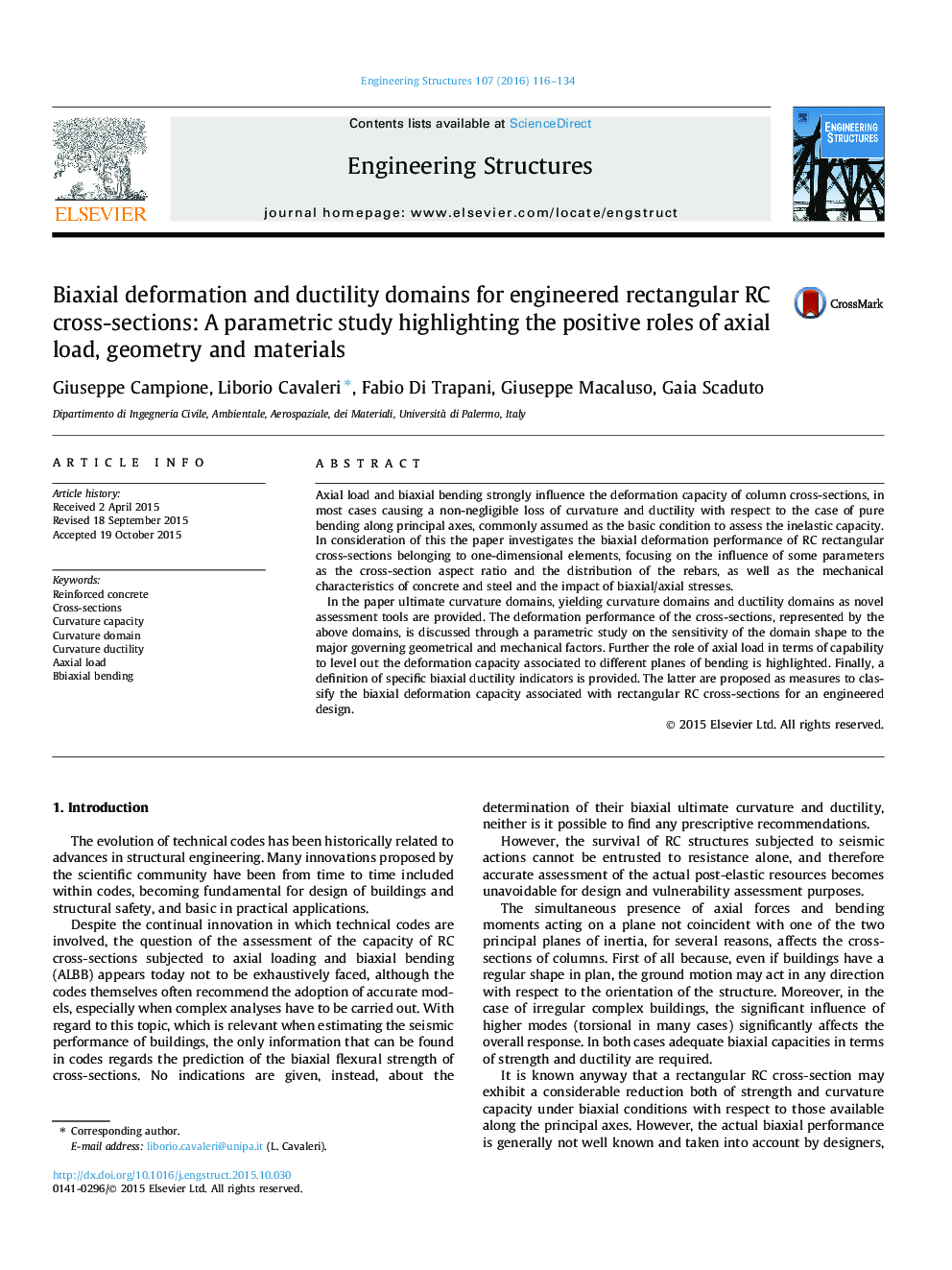| Article ID | Journal | Published Year | Pages | File Type |
|---|---|---|---|---|
| 265965 | Engineering Structures | 2016 | 19 Pages |
•The deformation capacity of RC cross-sections under biaxial loading is discussed.•The effect of geometrical and mechanical characteristics of cross-sections is investigated.•The curvature ductility domain of cross-section is first time proposed.•The “positive” role of axial load is highlighted.
Axial load and biaxial bending strongly influence the deformation capacity of column cross-sections, in most cases causing a non-negligible loss of curvature and ductility with respect to the case of pure bending along principal axes, commonly assumed as the basic condition to assess the inelastic capacity. In consideration of this the paper investigates the biaxial deformation performance of RC rectangular cross-sections belonging to one-dimensional elements, focusing on the influence of some parameters as the cross-section aspect ratio and the distribution of the rebars, as well as the mechanical characteristics of concrete and steel and the impact of biaxial/axial stresses.In the paper ultimate curvature domains, yielding curvature domains and ductility domains as novel assessment tools are provided. The deformation performance of the cross-sections, represented by the above domains, is discussed through a parametric study on the sensitivity of the domain shape to the major governing geometrical and mechanical factors. Further the role of axial load in terms of capability to level out the deformation capacity associated to different planes of bending is highlighted. Finally, a definition of specific biaxial ductility indicators is provided. The latter are proposed as measures to classify the biaxial deformation capacity associated with rectangular RC cross-sections for an engineered design.
